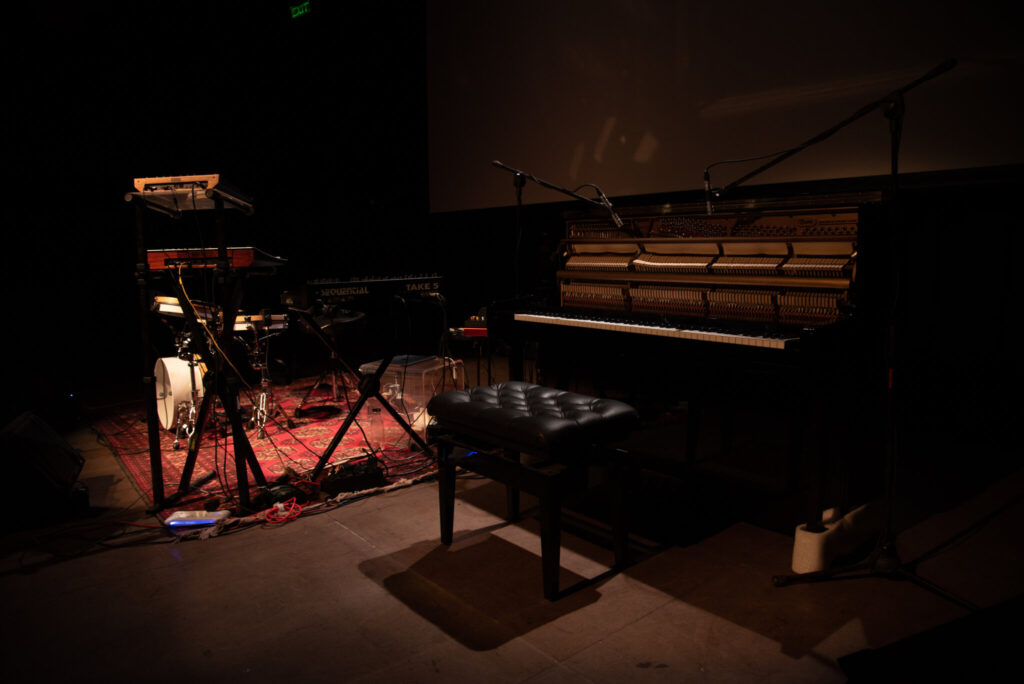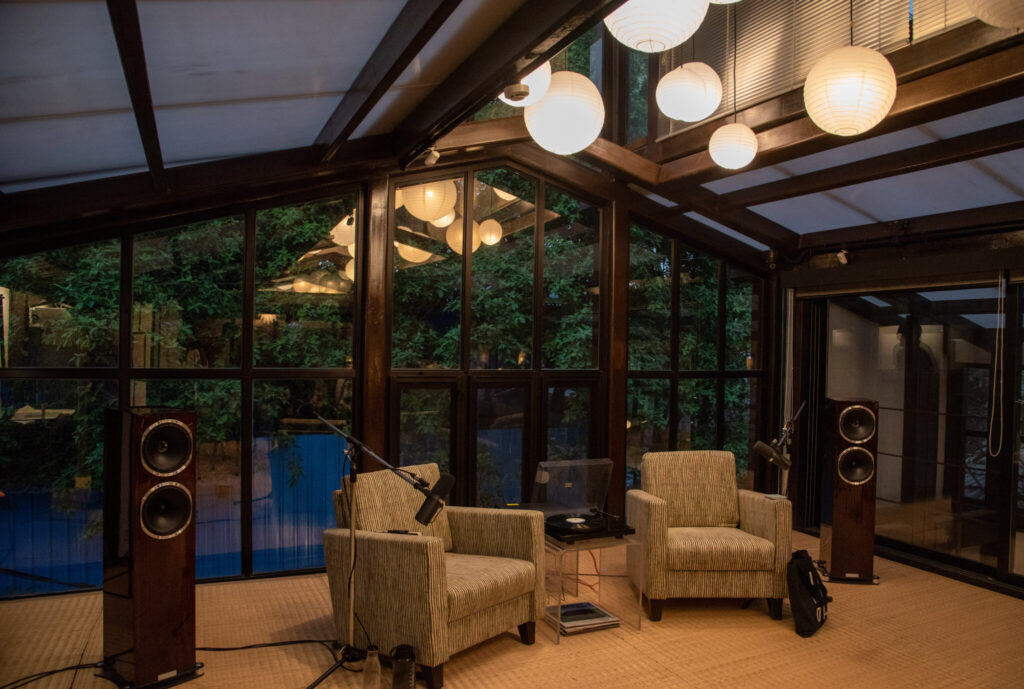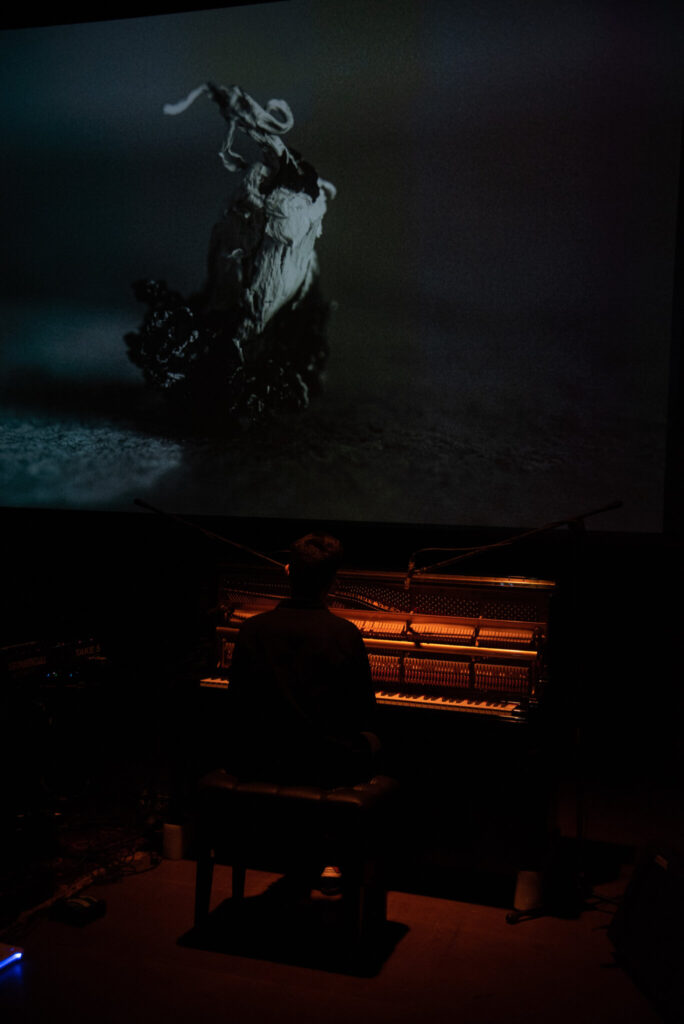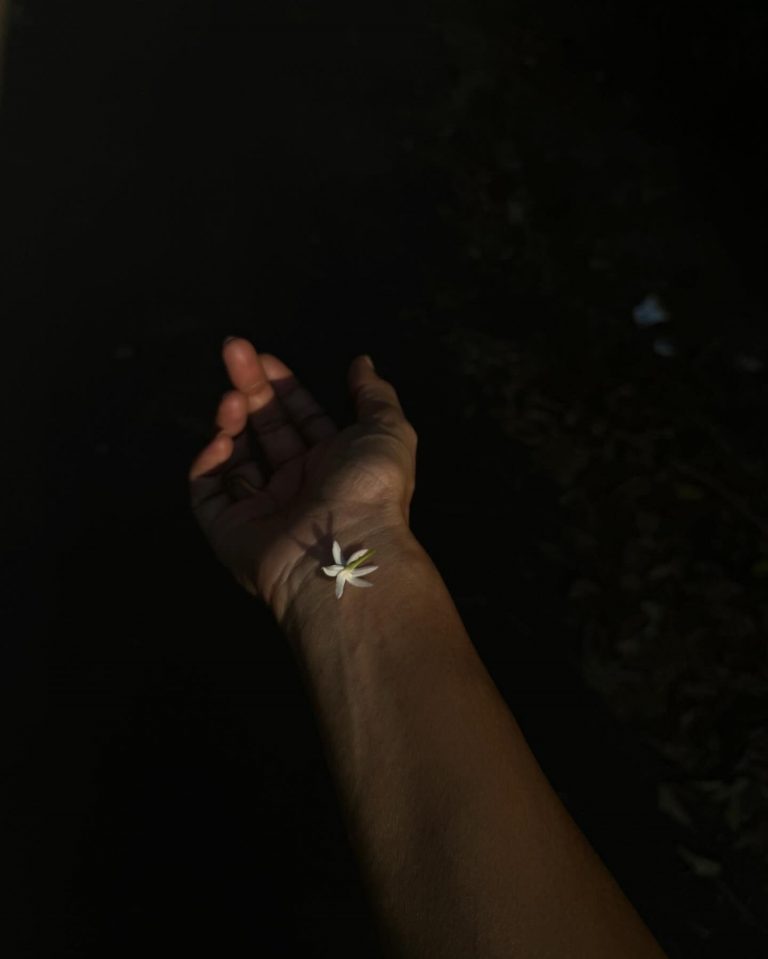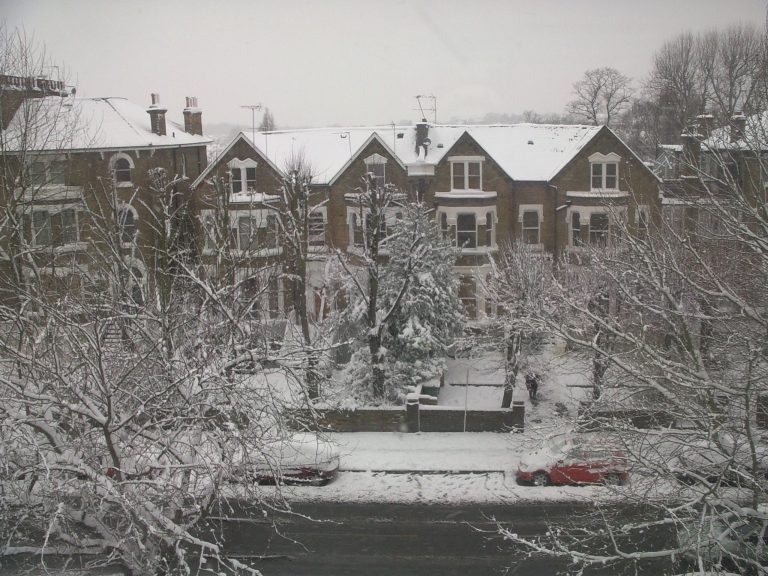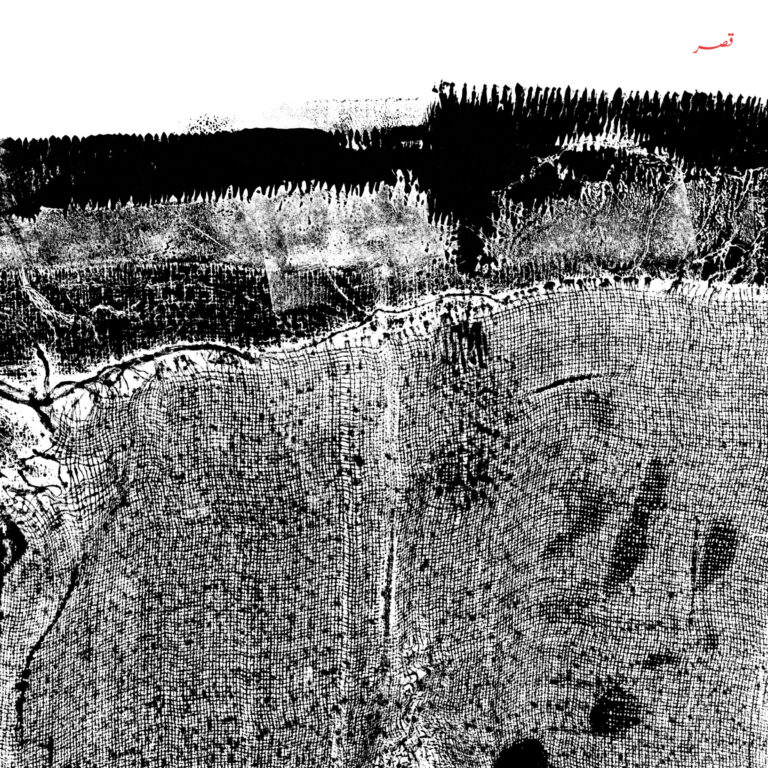discovering narratives 03
Discovering Narratives is a recurring series of G5A Imprint, where we bring together practitioners to have contemplative, quiet, in-depth, and organic conversations that begin with a singular point: a book, a painting, or a piece of music in the hope that this will allow both of them to unpack the layers of their work and approach.
Ishan: Good evening, my name is Ishan and I’d like to welcome you to In Residence with Tarun Balani at the G5A warehouse. In Residence is a long run series that creates space for practitioners to explore their craft, form, and expression to consistently and rigorously refine practice. The practitioners are hosted over an extended duration at the warehouse enabling work that is multidisciplinary and grounded in traditional and contemporary methods.
So this week has been a really exciting couple of days so far. On Wednesday we started off with a Drum Lab which was also part of our Academy arm, which focusses on how do you continue to practice while being a practitioner. And yesterday was a lovely closed door rehearsal where they got all of their kinks smoothened out as much possible, and this evening is a lovely Vinyl Listening Session where we’ll take you through a couple of different influences of Tarun’s and it’s also the formal launch of your EP – The Shape of Things to Come. Which is available on that lovely table over there! Buy it and stream it – because support and convenience.
Would you like to dive right in and listen to something or chat a bit?
Tarun: Depends on how intense your question is! Maybe let’s chat a bit first? Haha. We’ve played a bit of music already.
Ishan: Sounds good. What I was imagining is, where a good place would be to start a Vinyl Listening Session would be just to start with the idea of listening in general. For me, that’s step one, or step zero even; before we get to performing or making music, composing – all of that. Even when learning, listening is the first step.
Tarun: Yes, 100%.
Ishan: So I think the way I imagined us chatting this evening is that I present you with these ideas and we can chat back and forth. If you want to take us through some early influences, what were some of the things in your early listening, or receiving? What were the things that feel most memorable today?
Tarun: You could not have said that better. I think step one, even step zero, for any artist or practitioner that works in sound, the earliest memories of your interaction with your sonic or aesthetic, has a profound impact on how you view and relate to music. For me, the earliest memory that has stayed with me, and will stay with me for the rest of my life, is while growing up my Mum had a bunch of cassettes of ABBA, Simon & Garfunkel, The BeeGees. She would play them while doing house chores, controlling my brother and I while being mischievous.
That feeling of being at home, comfortable in that space, I still feel a lot of joy in those moments.
The other side, being more academic, comes from my Dad, who while dropping us to school, would play Indian Classical or Karnatik music, because he actually studied Indian Classical. He would give us a cassette fold and ask us – is this a mridangam, a tabla, a sarod? I must have only been in Class 3 or 4, but I remember seeing Amjad Ali Khan saab’s photo, or Bhimsen Joshi ji’s photo, while listening to that music. Now that I reflect on it, that has had a profound impact on how I relate to listening. It’s such a profound memory, a beautiful moment, frozen in time, that I relate to music learning or practice, even as an educator.
I think that the amount of tension or specificity to listening to music, how you absorb, how you emulate the greats, is fading away with technology a little bit. It’s become easier now that you can scroll back and forth everytime you want to transcribe a solo or learn a composition, but that rigor of only having one record to learn from, and not multiple choices, makes a huge difference. I remember my teacher telling me once that it’s better to know a couple records by heart, rather than carrying an iPod with 13,000 songs. When I was in music school everyone had iPods…
Ishan: Game-changer.
Tarun: My teacher would ask me: do you know this track, do you know this album? But I couldn’t tell him. So he really encouraged me to listen to, to learn tracks really attentively. Those were very important moments when it came to learning how to listen.
Ishan: I want to pick up on a couple words to linger on some of the things you said. How we relate to music, I think that is something that each person, artist, musician, has a different relationship with. There’s a lot of emotion that is carried in an album, song, or note, even just the attention. Like you mentioned, your Professor rightly said that there is an abundance of choice with everything now. You almost are forced to look at creating as content, as a product. How do you find yourself relating to your music listening differently today, in this frame? How much do you balance it with, say, composing? Do you take time out to re-listen to everything you already know, is there discovery, do you listen to new work?
Tarun: Since this overload of technology, I have found myself listening less on digital platforms, even though my music is on it! I find it very distracting, and am unable to focus when I have my phone, computer, or iPad with me. It just doesn’t work for me, and it’s a conversation I’ve had with multiple artists and creators. It’s a constant struggle for me to deal with.
When people say that with playlists, with digital curation, you can discover music… It’s very challenging for me to do that. I know that many people can find it very useful and approachable, but it is simply too distracting for me.
What I do now is I just simply buy records. I set out time in the week where I will actually listen to music, putting on a record from start to finish, absorbing as much as I can. I will replay it endlessly. So now I find myself just not listening to music in my car or in general.
Ishan: So what do you listen to then?
Tarun: I usually listen to podcasts, or just read books when I’m traveling.
Ishan: Oh right, they still have those.
Tarun: (laughs) Yeah they still have those. Also because I’m a music practitioner so it’s always good to just have a break. Then when the listening happens it happens very actively, when I can isolate myself and have that time where I can pick out a couple records and listen to it. So it’s quite surprising that I don’t actually listen to a lot of music. There are some phases when I will access new works and new music that is only available on DSPs.
Also we are of course, speaking from a place of privilege: records aren’t cheap, turntables aren’t cheap. I’ve slowly been building my library, buying two records a month, and exchanging records with friends. But that has become quite nice, to be able to revisit that habit of sharing music, of coming together with friends to listen to music together. When music is on with people in cars or cabs, it almost makes me anxious… I have to ask the driver to turn it down. Listening is becoming a sacred, special activity for me where I don’t take it for granted, and think about it quite deeply when it is happening.
Ishan: Has that response, that change in behavior, explicitly been translated in the work that you compose and create now? Or is that part of you still the same as before?
Tarun: It’s definitely had an impact because making the choice to release music on Vinyl is step 1 to allowing people to experience music the way I would experience any other artist or my own music. That’s definitely had a huge impact. And working with engineers who understand how to produce and record music, to put it on wax, so people can really enjoy the dynamic range in the music, its elasticity, from a technical standpoint. That has definitely changed.
Between my previous record, Dharma, and To Shape of Things to Come, there’s a massive difference impacted by my listening.
Ishan: I think that’s a good note to listen to something.
Tarun: Absolutely.
I’m not very familiar with this record because it came out quite recently. I am very familiar with the sound of Art Blakey and the Jazz Messengers. As an improvising musician and an improvising drummer, the influence of Art Blakey is phenomenal on my playing. I hope I have emulated this master. But I’m very familiar with the Lee Morgan Band, Hank Mobley, Bobby Timmons, etc. I’m going to play this track called Hipsippy Blues written by Hank Mobley. I hope you enjoy it.
*The song “Hipsippy Blues” by Hank Mobley plays*
Tarun: Wow…
Ishan: Hello! You still here?
Tarun: I was just lost for a moment, for sure
Ishan: I loved the section with the piano cascading
Tarun: Lee Morgan is one of my favorite trumpet players. That combination of Lee Morgan and Art Blakey is just amazing. The interesting part of this recording is that Benny Goldson the saxophone player who made a tremendous contribution to Art Blakey and Jazz Messengers Band, had a very short stint. Hank Mobley came in and joined the band right after, and this is that record where after quite a long European stint, Benny Goldson exits the band. So if you hear, the sound with Benny Goldson and Hank Mobley are quite different. A lot of the compositions on this record are by Hank Mobley. A great record. While the leader and the band being the same, one musician changing really changes the whole arc of how things move. Very, very beautiful to listen to.
Ishan: I think that takes us to the next general area I was going to talk to you about. The idea of responding and learning, and with that the bedrock of collaboration. That this one key group member leaving, and someone else coming in, changes the texture of the work. What is an experience that you really enjoyed where collaboration worked really well, and what is one where it didn’t? And have you been able to figure out why that happened in each situation?
Tarun: Absolutely. For me as an artist, I am an improviser at heart. Whatever I will do and am doing will always be extensions of that. I derive a lot of joy and continue to explore my collaboration with my group which is Dharma, a quartet that features New-York based trumpeter Adam O’Farrill, Finnish guitarist Olli Hirvonen who is now in New York, and Sharik Hasan on piano and synthesizers, who is from Bangalore who lives in New York as well. (laughs) I don’t know why I’m left here!
I really love collaborating with these gents because they are phenomenal artists and musicians, they are really well read, and constantly revved up to play improvised music, pushing me to spaces where I cannot imagine music the way I would by myself. It becomes a collective approach and an imagination that is truly democratic and brings us together, versus a band leader in a jazz setting that is quite common, or a vocalist as group leader.
Especially on the last record, I could really feel that discomfort and joy in the studio, where I had no idea how this record would sound. Literally that morning I called my Label – Bertholt Records in Germany – saying “you are paying for this studio time and this engineer, and I love the way this is going. But let me be honest with you, at the end of the day I have no idea what will be printed on this vinyl.” They asked me “Do you trust the musicians? The engineers?” I said I absolutely did, and they told me “just go for it”.
The sound on this record, the playing on this record, I think, is a testament to a true collaboration. I really enjoy those moments. It is something I continue to look forward to, even when we are on the road. The beauty of being an improviser is that I simply cannot play the same notes I played even five minutes ago. I can replicate it but it’s not going to be the same.
I will try to not talk about the collaborations that have not worked out! (laughs)
Ishan: Maybe looking back on it – why you were not on the same page. As diplomatically as-
Tarun: Yeah I’m not going to take names or anything, but the point is that if you are not willing to let go, are holding on to who you think you are in such a strong way that you cannot even invite or take a peek into somebody else’s perspective of creation – that does not allow any room for creation or co-creation.
Ishan: Conversation, even.
Tarun: Yeah, and for me the question is always how can I be the best student of music? Or a student of art, in an environment where there are other artists. I never want to go into a session thinking – I know it all, I know how to produce, how to play. I want to switch to – how can i do this differently?
I learnt this from the great Ustad Zakir Hussain. I was fortunate enough to be in a close group with him many moons ago in San Francisco, at a tabla camp. I asked him, do you get nervous or a stupid question like that. I’m sure he must have been thinking – why is he asking me that?
But I remember his response – “Whenever I am playing with great musicians, or with somebody young whose work I am not familiar with, the only thing I do before I sit before the instrument is that tonight I’m going to be the best student of music I can possibly be.”
I think that totally changes your perspective. You are so much more open, and that’s what I tell myself before playing the first note – I don’t know anything. So I am totally open.
Ishan: Yeah and I think that also comes from a very, I guess, confident understanding of who you are as well. I think a lot of times when someone is very closed off to listening, or having that collaboration or unable to let go, it’s because it’s scary. What if I’m not this type of musician? Then who am I? Nobody really wants to ask those questions.
Tarun: Absolutely.
Ishan: But I think it’s such a wonderful thing that you mentioned, because when you approach any art form or practice, I don’t think you will ever truly know everything. It’s not possible, even though we would like to tell ourselves that we have everything in control.
Especially with the type of music that you create and work on – how much of it would you say is the structure when you’re going into it, and how much do you intentionally leave open to improvising? Where is that bridge between “it has to be perfect”, and “I have to be that student of music”? How do you grapple with that?
Tarun: I wear many hats, so in the studio you are dealing with your art from a couple of perspectives: as producer, composer, or performer. I try to find a fine balance between all these three roles, because if you want to be a performer you want to take as many solos as possible, and play on the record as much as possible. If you view it from the perspective of a composer, then you want everything to be pitch-perfect, arranged in the most impeccable way, you don’t want to move things around. If you wrote an A-section a certain way you imagined, the B-section and a C-section, so through composed composition you really want to hold on to that.
The composer in you says, “You imagined it this way! How can you re-imagine it?”
Finally as a producer you see a birds-eye view, where you find a balance between viewing the other players as performers, honoring the composition, and seeing what the complete picture looks like. Each of these questions get very specific as well.
But to answer your question it’s more in the line of: Composer, then performer. From a composition point of view I’d say around 70% is written down, but there’s always at least 25% that is uncharted territory.
Ishan: And as you said, every performance is unique in itself, so everyone should come for each of the three shows this weekend (laughs).
Tarun: And as I said, that has bled into the “electronic music” I make as well. At times it’s almost like I have no idea what sound is coming out of it. It’s almost like tradition leading to innovation. I often would not have imagined that in a very traditional production of pushing buttons or moving knobs. I’m literally playing these things, so the music sounds a certain way. I truly hope, when I reflect on this record, I’m so happy that throughout those sessions I was so uncomfortable, because I can look at it with total appreciation and joy of making something unique.
It’s the same thing with Seasonal Affected Beats, because I look back and am glad that I took those chances. It’s not a great feeling, it leads to great anxiety in moments (laughs).
I am silent and focused, isolated when working on things, sometimes I feel like most of my life is in residence (laughs). Monday morning my partner is at work and I am reading a synthesizer manual at 12 noon.
Ishan: (laughs) I resonate with a lot of that. To fall into the Season Affected Beats approach as well… Electronic music, apart from many things, has a bad rap for being pre-programmed, structured, and pre-determined. You know: musician goes on stage and presses play. But especially when I came across that part of your work it did have those structured elements as well, which is clear in Dharma. If we are in this context we would say that jazz is the more classical of the two. But there is also that component where you are performing more than you are playing. When the synthesizers show themselves, do you find yourself approaching them differently?
Tarun: Great question. I think at the core of it both of them are the same. For me, improvisation and composition are somewhat the same thing. I’ll paraphrase the great saxophonist, Wayne Shorter, composition is improvisation in extreme slow motion, and improvisation is composition in fast-forward. Improvisation is just composing in real time, and composing is improvising in slow-motion. You say “I like this chord, I’m going to hang with it”, “I like this chord sequence, I’m going to live with this for a week, I’m going to change this and that”. I’m not a traditional composer. I hear music in my head, but I’m not the type to say that “I’m going to write a song today in B-flat”. I’d love to have that skill, but for me they are the same thing, just in fast or slow-motion.
I think the distinction between what I do with Dharma and Seasonal Affected Beats is that Dharma comes from the tradition of improvisational music or jazz music, where it is extremely social. It’s inward going outward. With Seasonal Affected Beats, it’s outward going inward. What I mean by that is that when I started playing electronic music it was to speak to, to have a sonic narrative of climate change in music. That is very difficult to do with Dharma. The more specific my narrative got in my head, the theme, and the choices became what Seasonal Affected Beats is. At the core of it is the same composer, same producer, and the tools differ, but it is the same.
Ishan: I feel like the constraints you set yourself are slightly different. You are working within a couple of different predetermined contexts. Personally, whenever approaching a project, the emptier the page, the longer it takes. I feel that having your creative constraint, gives you freedom within those constraints to explore everything. How is it that for this show tomorrow, which I know you have been building up for quite a while, how is this music looking at it in this trans-media format? How has that helped keep the guardrails of what the show could look like? How has this constrained you positively?
Tarun: I think limitations lead to infinite possibilities. Limiting yourself in terms of instrumentation, creation, using improvisation at the heart of music-making. And using what I would say is a traditional art-form – performative improvisation. Hence, working with Parizad, my collaborator for the shows tomorrow and day after, is a great visual artist, photographer, and film-maker, who interprets my music visually in ways that I cannot even imagine. The limitation, so to speak, of this performance, is coming from – how can we use something really simple yet profound like a traditional art form. For Parizad, it’s photography. Every visual you will see tomorrow is not digitally generated, it’s shot on analogue, digital cameras. It’s not generative visuals. She has just manipulated them in such a way that when people see it, they will say – “this is completely computer generated”. But it was actually a flower that was shot over 13-14 days, and a time-lapse that took 18 hours, and a flower that was dried and scanned. She has literally grown things in her house and shot them on time-lapse for the visuals. Limiting it to using a traditional visual art form and a traditional performative improvisational art form, and finding that bridge, is what is most exciting for me.
Ishan: Wonderful. Should we line something up?
Tarun: Absolutely. This is the artwork that Parizad made. This is my record Dharma, and she did the entire artwork for this. I’ll play something from here. My partner was kind enough to pose with me, we flew all the way to Goa to shoot this. The cover is re-imagining a wedding album on something that is not a wedding album at all.
The track I’m playing is called “Here We Go”. The composer in me is very particular about this record.
*The song “Here We Go” by Tarun Balani plays*
Tarun: Yeah my pianist and bassist were not very happy with me (laughs). The composer in me was very active and not willing to let some things go. On this track I would say 95% was pre-written. Only the piano solo and the little bass improv in the end was improvised. Everything else was written out to perform, like the unison lines-
Ishan: A lot of recurring refrains as well.
Tarun: I just like the texture of the upright bass and piano playing, and reversing that where the piano is playing in the low register and the bass in the high register.
Ishan: We talked about producer-composer-performer, but what about educator? Was that something you always felt was a logical next step? How do you view that role? Obviously the music practice part of it, those sort of complement each other, you wear different hats at different points. But the educator part is separate in some senses. How was that journey, that experience?
Tarun: I became an educator by accident. I didn’t really pursue it initially. My drum teacher back in 2003, was studying at Manhattan School of Music, and there was a new institute that came up in one of the suburbs outside of Delhi called Gurgaon. He could not come back to teach at that inaugural semester. I was one of his senior students and had just received a grade 8 from Trinity College, so I was in some shape or form qualified to teach. My teacher asked me to cover for him for the first few months. So that was my introduction to teaching. I had no training or experience, I looked like I was in 10th grade. A lot of parents were complaining about me (laughs).
So teaching happened by accident. I think the term educator is very heavy, personally I still look at it as a student of music. I saw one of Leonard Bernstein’s interviews where he said “You teach what you want to learn”. That has really stayed with me. What I’m practicing is what somehow bleeds into my lessons. I tell my students also, that they are teaching me more than I am giving to them. Because there were so many difficulties in my learning process, so many challenges, in my own education, it was very difficult to find proficient teachers, educators, who could take you in and guide you into how to practice this art form. It was a lot of trial and error, a lot of frustrating points, and now that I have a mental health vocabulary I can tell you that there were a lot of difficult moments that I don’t know how I got through.
Even at music school, when I landed at Berklee in my first semester, there were 600 drummers.
Ishan: Wow.
Tarun: Each one of them is faster, younger, more killing than the other one. And I thought I just couldn’t play. How was I supposed to deal with this? These individuals had learned music from 3,4,5, could read, write, learn anything. They were playing Cherokee at 360 bpm. I think I figured out the relationship between the self and the art, and how to teach yourself. I am very privileged that I had access over those 3 years to some of the best educators in the world, but the bottom line is that you have to teach yourself at the end of the day. And that is my philosophy when I teach, I don’t hold on to a student for the rest of my life. If you are coming back to me after 6 months, I am doing something wrong. You have to figure out how to teach yourself. I am going to be a mentor for the rest of your life, but learn how to teach yourself. Learn who you are. Learn yourself. No prescriptive method works.
That was also the birth of Global Music Institute (GMI) that I co-founded with my brother in New Delhi. We both had a similar journey figuring out how to learn and educate ourselves, finding out a way to get a scholarship, going to music school, finishing our bachelors, parents taking loans. It was difficult, but still I acknowledge my privilege of having that opportunity. That was the birth of Global Music Institute where we wanted to create a space that is accessible, affordable and still imparted world-class performing arts education. To give a space to students who want to learn music, and take it up in a professional capacity.
Now, I feel like being an educator is part of who I am. I am constantly teaching myself, I am learning, and that bleeds into my work at GMI, or independently when I am teaching. It’s an important part of who I am.
Ishan: I don’t know if I’ve mentioned this before, but the first concert we had at the Black Box was with your brother.
Tarun: Really?
Ishan: And his band.
Tarun: Was it Khamira?
Ishan: No even before that. It was in 2015. Burum, I think.
Tarun: That was the precursor.
Ishan: Yes, that was the first show we had. And we’ve been chatting for the last two years to get you here. So it’s been quite a journey.
Now to get to a final few things, and listen to a couple of tracks, is just the idea of ending. I think that today, even generally, we tend to prolong, stretch things out, with multiple iterations of things. I think in creating a piece of music or an album that is coherent, you have to be equally as cognizant of where it begins and where you leave your audiences. And I think that one of the best things and one of the most heartbreaking things about a song is that it has to end. How do you grapple with that when you are creating this piece – the EP we are launching today – and the next projects?
Tarun: I think at that point of time, as an artist, when I give it a birds-eye view and look at it as a complete creation, I have to let go of the composer, the producer, what my label wants, what is in, what is hip, all that kind of stuff. I think it really boils down to what you are trying to say with your music, and how strong that narrative is to you, and how it goes to the audience. That is the arc of how I try to design my records. And an interesting fact about a record – as you go closer to the center of a record, you should not have louder and more dynamic music. It warbles. So in the days of the Beatles the singles were always in the front of the record, and the track that the record label least wanted, would put it there. That is something I learnt by making music on vinyl. Even while we were tracking the record these are the things we were keeping in mind. In this record I play that track – 2º ends on a mellow note so it works out. I would like to believe that I am a sonic storyteller so I want people to think about and imagine imagery, storyline, visuals, emotions, when they listen to the music. That’s why I have very specific titles in how I shape the record.
The interesting thing is that “The Shape of Things to Come” was supposed to come out before 2º came out. And “The Shape of Things to Come” ends with the track 2º and the Seasonal Affected Beats EP is titled 2º, but it went in reverse. So 2º came out first and then “The Shape of Things to Come” came out in October 2020.
For me it’s about the narrative and how I want to shape the music, and at that point of time nothing can really impact what I do. I am quite a perfectionist, in a collaborative sense I drop that to a huge extent, but for my own works, sometimes even titles come first before I put a chord down for a composition. That’s how I see the storyline and the narrative of the music and then I try to match that.
The endings are even more important than how things begin in some ways. I always want to leave my listeners wanting more. The tonality, the key, the sonic aesthetic, everything that I am working with, needs to be impeccable on how things are left off. A lot of thought goes into that.
I hope that comes through when I play you the last track of that record.
*The song “2º” by Seasonal Affected Beats plays*
Ishan: Does anyone have any responses, thoughts, comments?
Audience: What was the story behind this track’s title and composition?
Tarun: When I decided to make music as Seasonal Affected Beats, the theme or narrative was – and this gets a little technical – the first thing I did to educate myself about climate change was going to the IPCC’s website and downloading the Paris agreement from 2016. And I read it, not all of it (laughs), but a lot of it. If you’re familiar with the general arc of how climate change is being reported and talked about, the bottom line is that if by 2050 we do not limit the temperature rising, that it remains under 2º-1.5º to be very precise- there will be catastrophic impacts.
In 2016, I was reading this book called “The Great Derangement ” by Amitav Ghosh, about how fiction usually lacks how climate change is the bed of many narratives. That really stuck with me. Usually you see a very sci-fi film about the world ending, but there is barely anything in reverse. I guess the movie “Interstellar” has a somewhat positive ending. I thought if I were to write music that depicts that, that everything is not supposed to be the end of the world. I felt almost responsible to talk about it. And the more I thought about it, the title came. The composition came when I was sitting at a piano in New York in 2019 with a record date coming very soon, and my label asking me for demos. But the title came to me three years before that. That’s what 2º is about, and what tomorrow’s show is about – can we re-imagine what this narrative or story of climate change can be for us? That’s what I’m trying to imagine with the music, that maybe we can re-imagine a different future. That it could be something that is not this 2020 sci-fi end of the world. I don’t know what it could be, but can we collectively re-imagine that?
This was part of In Residence with Tarun Balani at the G5A warehouse.
